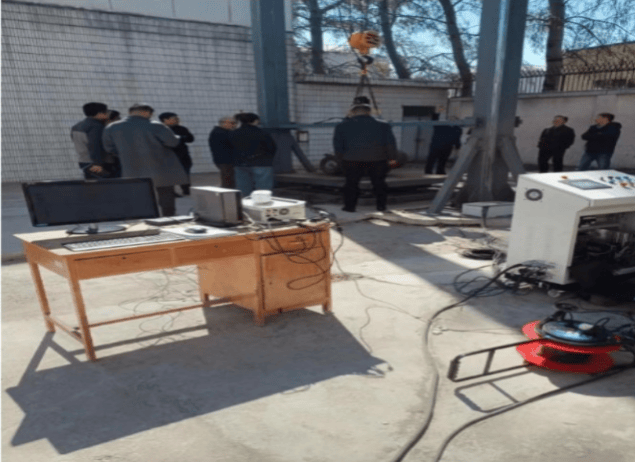High-Precision Airdrop Landing Impact Test with DE-928U
1. Project Background and Challenges
A military research institute was tasked with developing a new airdrop supply package (internally code-named "Oil Naan"). The moment the airdropped supplies land, they endure significant impact forces that could damage internal instruments or compromise structural integrity. Traditional theoretical calculations and simplified tests failed to accurately simulate complex landing attitudes and impact processes. The institute urgently needed a highly reliable testing system capable of synchronously measuring multi-dimensional mechanical parameters to quantitatively evaluate the airdrop safety of the "Oil Naan" and ensure it met stringent military standards.
2. Solution
The research institute decided to build a dedicated drop impact test bench and selected the DEWESoft DEWE-928U High-Performance Dynamic Signal Test and Analysis System as the core data acquisition and processing unit. This setup aimed to realistically replicate landing impact conditions and capture comprehensive data.
System Configuration:
Stimulus System: A customized drop test bench featuring a lifting frame and a high-strength impact platform, enabling precise control over drop height and release attitude.
Data Acquisition (DAQ) System: The DE-928U System. Its high channel count, high sampling rate (>1 MS/s), wide dynamic range, and powerful synchronization capabilities were critical for accurately capturing transient impact signals.
Sensor System:
Impact Force Measurement: Six high-dynamic force sensors were symmetrically installed under the impact platform (three each along the front and rear sections, positioned at the 1/4, 1/2, and 3/4 points). This layout enabled precise measurement of total impact force and its distribution, determining whether landing occurred with tilt or eccentricity.
Impact Acceleration Measurement: Five high-precision ICP-type impact accelerometers were placed on the platform's surface (one at the center and four at the corners). These measured the platform's vibrational response upon impact, indirectly and comprehensively reflecting the shock acceleration experienced by the test object ("Oil Naan").
3. Testing Process
Setup: The test sample ("Oil Naan") was secured to the lifting frame and raised to a predetermined height (simulating airdrop altitude).
Configuration: The DEWEsoft software was used to easily configure all sensor channels (force and acceleration) with engineering units, sampling rates, and ranges.
An impact trigger mode was set.
Execution: The sample was released for free fall onto the platform.
Data Acquisition: The DEWE-928U system automatically triggered upon impact, synchronously acquiring data from all 11 channels (force and acceleration).
Analysis: Post-test, built-in DEWEsoft analysis tools were immediately used for processing:
Calculation of peak impact acceleration (G-force) and peak impact force.
Integration to determine the duration of the impact pulse.
Synthesis of total impact force from the six force sensor readings and analysis of force distribution maps to evaluate impact uniformity.
Comparison of all measured results against GJB (National Military Standards) or project-specific pass/fail thresholds.
4. Outcomes and Benefits
Data-Driven Design: Precise test data revealed structural weaknesses in the initial design during specific-angle landings. This informed multiple rounds of design iterations and optimizations, significantly enhancing product reliability.
Quantitative Acceptance Criteria: Established quantitative acceptance criteria centered on maximum impact G-force and platform peak impact force, replacing previous reliance on experiential judgments of "whether it broke" with data-backed quality control.
Efficiency Gains: The integrated acquisition and analysis capabilities of the DE-928U system delivered near-instant results post-test, drastically reducing R&D testing cycles and accelerating project timelines.
Successful Delivery: The testing solution successfully verified that the final "Oil Naan" model fully met design requirements. The system, along with the drop test bench, was delivered to a unit in Beijing in April 2024, providing robust technical and equipment support for enhanced logistical capabilities.
5. Conclusion
In this case, the DE-928U system delivered a complete and reliable data acquisition solution for critical military R&D. It transformed elusive impact phenomena into precise, quantifiable engineering data, successfully shifting reliance from "experience" to "data." This ensured the integrity of airdropped supplies under extreme impact conditions, showcasing an exemplary application of dynamic testing technology in enhancing military product quality.

